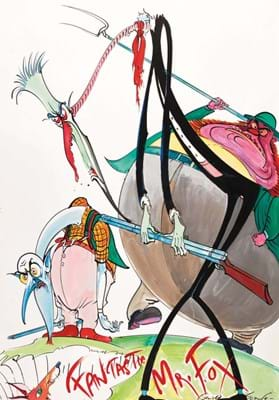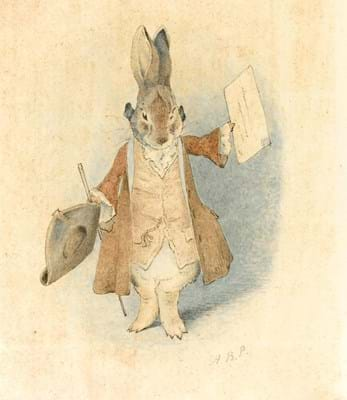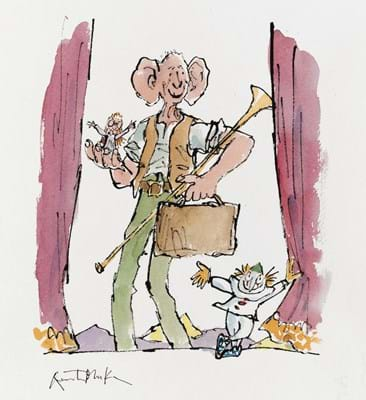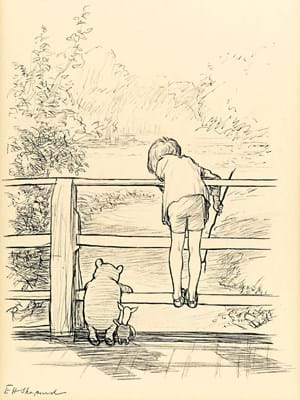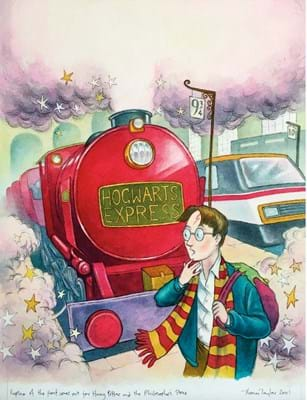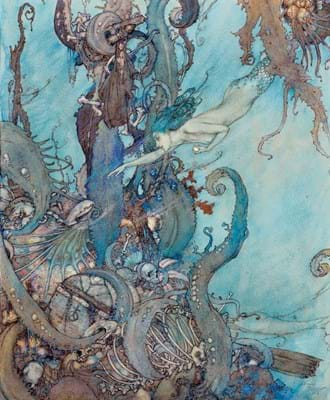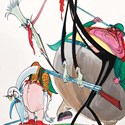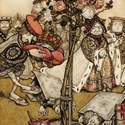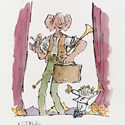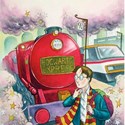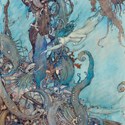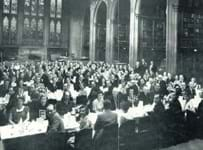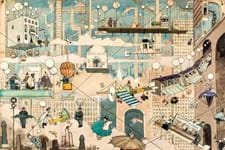It was the development of colour printing in the 19th century that allowed illustrative art to truly come into its own.
Book illustrations had delighted, educated, stimulated and titillated for centuries but it took the genius of Victorian printers such as George Baxter (1804-67) and Edmund Evans (1826-1905) to bring about a rapid evolution in the quality and complexity of the pictures that could be reproduced.
Together they helped usher in the so-called ‘Golden Age of Illustration’.
The Golden Age is commonly held to run from the 1880s to the 1930s, beginning with the likes of Kate Greenaway, Randolph Caldecott and Walter Crane and reaching its peak in the early 20th century with the books illustrated by artists such as Arthur Rackham, Edmund Dulac and Kay Nielsen.
All were tremendously popular, some household names, in their day.
The market for the original artwork from this era was slower to develop, born when further generations of young readers came of collecting age. It was not until the 1970s (by which time this style of book illustration was out of publishing favour) that original drawings and watercolours by the likes of Dulac and Rackham were appearing frequently in auction and dealer catalogues.
A decade later interest spiked as wealthy private collectors entered the throng, often paying sums at auction for big-name artists that left dealers stunned.
Today many of the best examples of this genre are now sold ‘under the radar’ via private treaty through auctioneers or in dealers’ shops, but there is little suggestion that prices have dipped.
Character Building
Masterpieces from the Golden Age once provided all the financial benchmarks in this collecting sphere.
However, the growth in recent decades has been for artwork from a later generation of children’s book illustrators who have made the genre their own.
“From Peter Rabbit to Paddington, pricing is often character driven”
From Eric Carle’s Hungry Caterpillar to Beatrix Potter’s Peter Rabbit, and Michael Bond’s Paddington to Mary Tourtel’s Rupert, pricing is often character driven.
Potter was a keen and accomplished natural history illustrator, whose original watercolour depictions of flora and fauna can make between £1500 and £4000 at auction today. However, collectors will pay many times this for a good illustration relating to Peter Rabbit and friends.
Likewise original artwork by the late American artist Maurice Sendak (the subject of a special sale at Sotheby’s NY in December 2015) can range from a few hundred pounds for basic pencil drawings to tens or even hundreds of thousands of pounds for fully worked-up compositions from Where the Wild Things Are.
The product of one of the most celebrated collaborations in British book history, AA Milne’s children’s characters as depicted simply and superbly by Ernest Shepard command huge prices. The collection of illustration art formed by film director Michael Winner (sold by Sotheby’s in 2012 for £1.2m) featured over 100 original artworks by blue-chip names, but it was the original pencil drawings by Shepard that garnered most attention.
The much-loved sketch of Christopher Robin bumping Winnie-the-Pooh down a flight of stairs sold for £115,000.
A little more affordable are the drawings Shepard created for the 1931 edition of Wind in the Willows (some of them later reworkings of famous images) but buyers on a budget could look at the ’non-Pooh’ work he produced for Punch magazine. Lewes saleroom Gorringe’s sold a collection of these in 2014 for around £300-400 apiece.
The expressive illustrations of Sir Quentin Blake have definitely seen a hike in price over the last few years.
This is in part due to a re-engagement with Roald Dahl’s work via screen and stage, but also thanks to exhibitions of his work. Last year’s British Library show celebrating Dahl’s 100th birthday and the 2015 Blake retrospective at the Chris Beetles Gallery in London both reminded of his singular genius.
Beetles, whose annual event The Illustrators takes place every November, believes the whole market is going through something of a renaissance.
“Over the last 40 years of collecting and dealing in English illustrations and cartoons I have seen a steadily expanding market. Until now that is.
“Over the last two years we have witnessed a mini boom.” Nostalgia, he says, is a powerful driver. “While bookish elderly collectors are still obsessively filling in the gaps in their acquisitive areas of choice, they have been rapidly joined by hundreds of young parents with disposable income, keen to decorate their childrens’ bedrooms and recreate the pleasures of the books that they grew up with.”
“Parents with disposable income are keen to recreate for their children the pleasures of the books they grew up with”
Illustrating Diversity
Of course, many illustrators of children’s books have also penned for an older readership.
Modern examples of this crossover include Kit Williams, whose enigmatic works Masquerade (1979) and The Bee Book (1984) intrigued children and adults alike, but whose other work explored much darker themes.
Likewise, the full extent of Ronald Searle’s art and caricaturing will come as a surprise to those who only know him for his St Trinian’s illustrations.
The collecting sphere has also expanded to include the work of political cartoonists and the original artwork of graphic novels and comics.
Gerald Scarfe held a special auction of 132 original works at Sotheby’s in April this year (sales in this area are a great source of publicity for even the mightiest of salerooms) where prices ranged from £2000 for a sketch of the character ‘Phil’ from Walt Disney’s Hercules to £18,000 for ‘The Teacher’ from Pink Floyd’s The Wall.
Leading lights of the sometimes dark realms of comic book illustration include Dave McKean (Batman, Sandman and Black Orchid) and Simon Bisley (2000AD and Heavy Metal). Recent sales in the US suggest they are every bit as admired by a global fanbase today as Rackham and Dulac were in Edwardian Britain.
The UK’s only public gallery dedicated to the subject, The House of Illustration, which opened in King’s Cross in 2014, is a place to see illustration art in all its forms from advertisements to animation. It is also a place to spot new talent.
Speculating on emerging artists is not necessarily a bad thing.
It obviously comes with some risk – it’s worth remembering that many illustrators have gone in and out of fashion across the past century – but typically prices for new work are relatively low, especially when, in the social media age, it is possible to buy directly from an array of artists.
It may, however, be too late to wager on the fortunes of Thomas Taylor, whose first professional commission was the cover artwork for the first UK edition of a book called Harry Potter and the Philosopher’s Stone.
In 2001 it sold at Sotheby’s for £75,000 to a US collector, but would surely far surpass that now.
Article by Roddy Newlands

